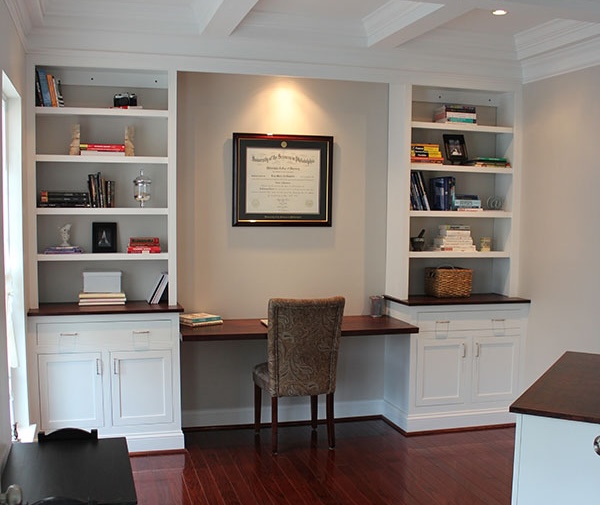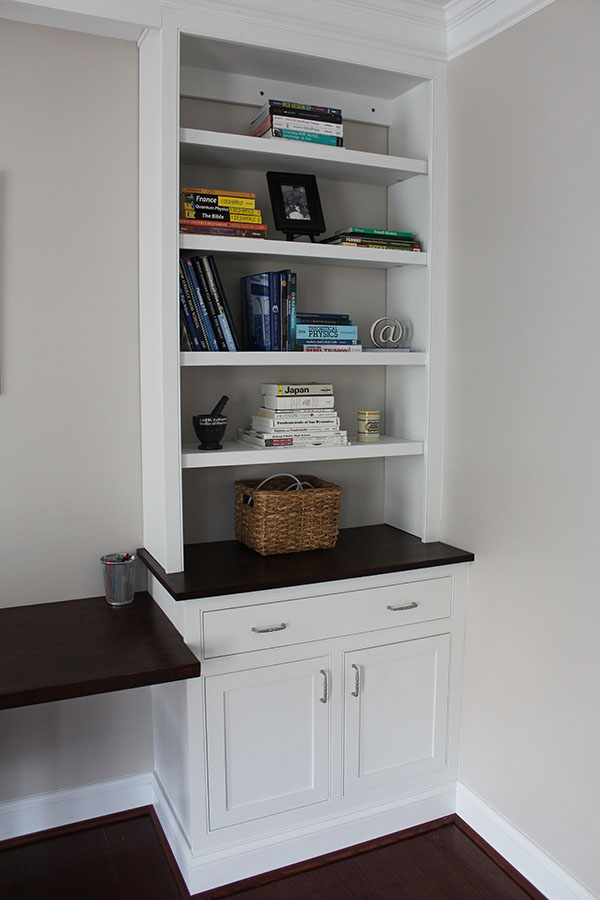
When it comes to custom built-in cabinet designs, a few thoughtful choices can take your project from “functional” to “magazine-worthy.” Whether you’re a seasoned woodworker or a DIY enthusiast using CabinetPlans.io to plan your project, these tips will help you create built-ins that look high-end, fit your space perfectly, and maximize your budget.
For most built-in cabinets, you can leave the back open to save time, money, and weight—without sacrificing much strength. This approach also gives you easy access to outlets or cable connections, which can be especially handy for media centers or office built-ins. Simply paint the wall behind the cabinet to match either your cabinet color or your room’s wall color for a seamless appearance.
In kitchens, toe kicks improve comfort when standing for long periods, but built-ins aren’t workstations—they’re more about storage and style. Using baseboard molding instead of a recessed toe kick instantly gives your cabinet a more custom, furniture-like appearance. This also prevents the built-in from looking like a converted kitchen cabinet.

A simple trick to make your shelves look more substantial is to attach a 1-inch or wider “one-by” board along the front edge, turned on its edge. Not only does this give the appearance of a thicker shelf, but it also adds strength. For maximum rigidity, cut a groove into the back of the hardwood and glue your plywood shelf into it—creating an I-beam effect. This also hides the raw plywood edge for a more finished look. While CabinetPlans.io doesn’t automatically add this option, it’s an easy after-build modification.
For a truly custom feel, consider a beaded face frame, inset doors and drawers, or both. These small upgrades can elevate your built-ins from “nice” to “luxury.” The best part? CabinetPlans.io lets you incorporate these high-end features into most cabinet designs, ensuring your parts list and cut sheets account for every detail.
Stack upper cabinets on top of base cabinets to achieve a grand, floor-to-ceiling look. Fill any gaps between the top of the cabinet and the ceiling or soffits with crown molding or trim. This approach makes your built-ins look intentional and maximizes storage space. Plus, when building your own, you can customize the height—taller for extra storage, shorter for easier reach.
For an integrated, built-in appearance, match your cabinet color to your room’s trim, crown molding, and baseboards. While you shouldn’t use wall paint on cabinets, most paint manufacturers offer trim- and cabinet-grade products in the same colors. For example, Sherwin Williams’ ProClassic enamel works beautifully for brush-on applications, while their Gallery Series is ideal for spraying.
With CabinetPlans.io, you can customize your built-ins to suit your space, integrate premium features, and generate accurate parts lists—all in your browser. These six tips are just the start—your creativity is the limit.